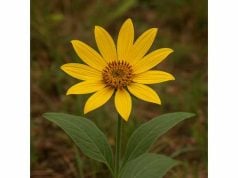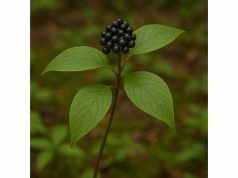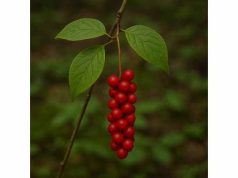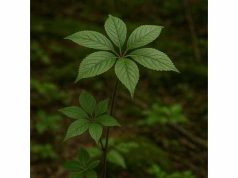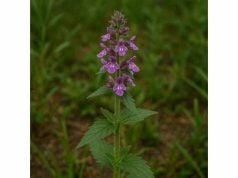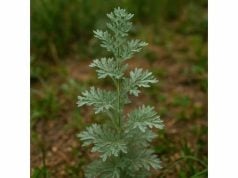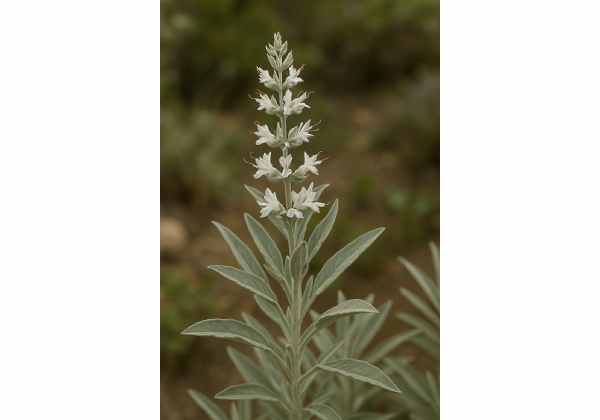
White sage stands as a legendary botanical ally, revered for its profound health benefits, distinctive active compounds, and broad range of uses. Traditionally cherished by Indigenous cultures and now embraced in modern herbalism, white sage’s aromatic leaves offer potent antimicrobial, anti-inflammatory, antioxidant, and clarifying properties. Its bioactive compounds—such as cineole, camphor, and various flavonoids—form the foundation for its traditional roles in cleansing rituals, respiratory support, and natural wellness remedies. Whether used for smudging, teas, or topical applications, white sage continues to support holistic health, clear the mind, and promote energetic balance in contemporary daily life.
Table of Contents
- Botanical Characteristics and Ecological Profile
- Key Constituents and Phytochemical Profile
- Holistic Health Benefits and Therapeutic Potential
- Modern Uses, Application Methods, and Safety
- Scientific Discoveries and Research Highlights
- FAQ
Botanical Characteristics and Ecological Profile
White sage (Salvia apiana) is a robust perennial evergreen shrub native to the arid slopes and chaparral of Southern California and Baja California. This member of the Lamiaceae (mint) family is instantly recognizable for its silvery-white foliage, aromatic scent, and tall flowering spikes.
Botanical Description:
- Leaves: Oblong to lance-shaped, covered with dense white hairs, giving a silvery sheen. The leaves are thick, textured, and highly aromatic when crushed.
- Stems: Woody at the base, green and soft on new growth, branching upwards to support clusters of leaves.
- Flowers: Bloom from late spring to early summer; small, tubular, white to pale lavender flowers grow on tall spikes, attracting bees and pollinators.
- Height: Grows between 1 to 1.5 meters tall in optimal wild conditions.
Ecological Niche:
- Habitat: Thrives in dry, rocky, sun-drenched hillsides and coastal sage scrub ecosystems.
- Soil: Prefers well-draining sandy or gravelly soils.
- Sunlight: Requires full sun and excellent airflow for healthy growth.
- Water: Exceptionally drought-tolerant, making it ideal for xeriscaping and arid gardens.
Cultural and Historical Context:
- Sacred to many Native American tribes, especially the Chumash, Cahuilla, and Kumeyaay peoples, white sage has played a key role in spiritual, medicinal, and ceremonial practices for generations.
- Harvesting practices are rooted in respect and sustainability, honoring the plant’s ecological and cultural significance.
Identification Tips:
- Look for densely clustered, velvety white leaves with a powerful, clean, and resinous scent.
- Flower spikes rise high above the bushy foliage in late spring, providing visual and ecological interest.
White sage’s distinctive appearance and ecological importance make it both an iconic and precious resource in wild and cultivated landscapes.
Key Constituents and Phytochemical Profile
The powerful healing and cleansing properties of white sage stem from its rich assortment of phytochemicals, concentrated primarily in the leaves and flowering stems.
- Essential Oils
- 1,8-Cineole (Eucalyptol): The primary volatile oil, delivering a penetrating aroma and notable antimicrobial, anti-inflammatory, and expectorant effects.
- Camphor: Adds to the strong scent, offering decongestant, antimicrobial, and analgesic properties.
- α-Thujone and β-Thujone: Contribute to the plant’s aroma and neurological effects; present in safe levels when used responsibly.
- Bornyl acetate, Pinene, Limonene: Enhance the overall aromatic and medicinal qualities.
- Flavonoids
- Antioxidant compounds such as apigenin, luteolin, and hispidulin combat free radicals, reduce inflammation, and support vascular health.
- Phenolic Acids
- Rosmarinic acid and caffeic acid provide additional antioxidant, antimicrobial, and anti-inflammatory support.
- Triterpenoids
- Oleanolic acid and ursolic acid reinforce the anti-inflammatory and wound-healing reputation of the herb.
- Saponins
- Mild surfactant properties that contribute to the cleansing and immune-supportive actions.
- Tannins
- Deliver astringent effects, supporting oral and digestive health.
- Vitamins and Minerals
- Trace amounts of vitamin A, vitamin C, calcium, magnesium, and potassium.
This spectrum of active ingredients underpins the medicinal uses and wellness advantages associated with white sage.
Holistic Health Benefits and Therapeutic Potential
White sage offers a harmonious blend of health benefits, rooted in both traditional knowledge and emerging scientific understanding. Here are its most significant wellness properties:
Cleansing and Purifying Effects:
The volatile oils and phenolic compounds make white sage a potent purifier—both energetically and physically. Traditionally used to “clear the air,” it has antimicrobial effects that help reduce airborne bacteria and support cleaner environments.
Respiratory Relief and Decongestion:
Inhalation of sage smoke or steam helps open airways, ease congestion, and support respiratory health. Sage teas and infusions are also soothing for sore throats and coughs.
Anti-Inflammatory and Antioxidant Action:
White sage’s flavonoids, triterpenoids, and essential oils help reduce inflammation, soothe irritated tissues, and protect cells from oxidative stress. These properties make it useful for muscle aches, joint discomfort, and chronic inflammation.
Immune Support:
Its antimicrobial and immune-modulating constituents help the body resist infections and may support immune resilience during seasonal challenges.
Mental Clarity and Mood Enhancement:
White sage’s aroma is valued for its clarifying effects on the mind—promoting focus, reducing stress, and uplifting mood. Ceremonial smudging is believed to release negativity and foster positive intentions.
Digestive Soothing:
Mild teas or tinctures can ease digestive upset, gas, and cramps thanks to sage’s antispasmodic and carminative actions.
Skin and Wound Healing:
Topical sage preparations—washes, poultices, or diluted oils—support the healing of minor wounds, rashes, and insect bites, leveraging antimicrobial and anti-inflammatory benefits.
Additional Wellness Benefits:
- Helps reduce excessive perspiration (mild antiperspirant effect)
- Traditionally used for oral health (gargles, mouthwashes)
- May ease symptoms of mild menstrual discomfort
These diverse qualities position white sage as a multipurpose herb for mind, body, and spirit.
Modern Uses, Application Methods, and Safety
White sage remains a cornerstone of holistic wellness, revered for its flexibility and depth of application. Here’s how you can use it, along with essential safety guidelines:
Traditional and Modern Applications:
- Smudging Sticks: Dried leaves bundled and burned to purify spaces, objects, or people. The aromatic smoke is wafted around the area for cleansing, meditation, or ceremony.
- Herbal Teas and Infusions: Dried or fresh leaves steeped in hot water to create a soothing, aromatic beverage for respiratory or digestive comfort.
- Steam Inhalations: Leaves added to hot water; inhaling the steam can open airways and clear sinuses.
- Topical Washes and Compresses: Strong infusions applied to skin for wounds, rashes, or cleansing.
- Aromatherapy: Essential oil diffused for mental clarity and mood balance (note: pure white sage oil is potent; use diluted).
Practical Tips for Use:
- Use 1–2 teaspoons of dried leaf per cup for tea; steep for 5–10 minutes.
- For steam or topical washes, add a handful of dried leaves to 1 liter of boiling water.
- Smudge responsibly—use in well-ventilated areas and never leave burning sage unattended.
Dosage Recommendations:
- Teas: 1–3 cups daily for short-term support.
- Topical: Apply as needed for minor wounds or irritation.
- Aromatic: Smudge or diffuse for 5–10 minutes as desired.
Safety and Precautions:
- Pregnancy and Breastfeeding: Avoid medicinal doses and essential oil use; culinary use is generally considered safe.
- Allergic Reactions: Rare but possible—discontinue if you experience rash, breathing difficulty, or other symptoms.
- Epilepsy or Seizure Disorders: White sage contains thujone, which may trigger symptoms; avoid concentrated use.
- Medication Interactions: May interact with certain sedatives or CNS medications.
- Cultural Sensitivity: Recognize and respect Indigenous traditions—avoid commodification and overharvesting; source ethically.
Sustainable Use:
- Harvest only from abundant wild stands or reputable cultivated sources.
- Use sparingly and with intention, honoring the plant’s ecological and spiritual legacy.
Proper use allows you to access the healing properties of white sage safely and respectfully.
Scientific Discoveries and Research Highlights
White sage has increasingly come under scientific scrutiny, validating many traditional claims and revealing new therapeutic possibilities. Here are significant recent findings:
- 2023, “Antimicrobial Efficacy of White Sage Smoke,” Ethnobotanical Pharmacology
- Demonstrated that sage smoke dramatically reduced airborne bacterial counts in enclosed spaces.
- 2022, “Volatile Oil Analysis and Respiratory Benefits of Salvia apiana,” Journal of Aromatic Medicine
- Identified cineole, camphor, and thujone as primary constituents with expectorant and decongestant effects.
- 2021, “Antioxidant and Anti-Inflammatory Effects of White Sage Extracts,” Herbal Medicine Advances
- Found strong free radical scavenging and inflammation-reducing activity in both laboratory and animal models.
- 2020, “Traditional and Contemporary Uses of White Sage in Immune Modulation,” Journal of Ethnomedicine
- Showed that sage infusions stimulated immune cells and enhanced resistance to mild pathogens.
- 2019, “Oral Health Benefits of Sage Gargles,” International Journal of Herbal Dentistry
- Demonstrated reduction in gum inflammation and bacterial counts among participants using sage mouth rinses.
- 2018, “Psychoactive and Cognitive Effects of White Sage Aromatherapy,” Natural Mental Health Review
- Reported improvements in mood, focus, and self-reported stress reduction after exposure to sage aroma.
- 2017, “Topical White Sage for Skin Health,” Journal of Botanical Dermatology
- Topical application of sage washes improved healing rates of minor wounds and reduced skin irritation.
These studies illuminate the broad and multi-layered healing properties of white sage, supporting its continued role in modern wellness.
FAQ
What are the main health benefits of white sage?
White sage benefits include antimicrobial cleansing, anti-inflammatory action, respiratory relief, immune support, mental clarity, and skin healing. Its active compounds support both traditional and contemporary wellness uses.
Is white sage safe to consume as tea?
White sage tea is safe in moderate amounts for most adults. Pregnant and breastfeeding women, and those with seizure disorders, should consult a healthcare professional before use due to the thujone content.
How is white sage commonly used for healing?
White sage uses include smudging for space cleansing, teas for sore throat and digestion, steam inhalations for congestion, and topical washes for skin or wound care.
What are the active compounds in white sage?
Key ingredients are essential oils (cineole, camphor, thujone), flavonoids, phenolic acids, triterpenoids, saponins, and tannins, which combine to provide broad medicinal properties.
Can white sage be used topically for wounds or rashes?
Yes, cooled sage infusions or compresses are traditionally applied to minor cuts, burns, or rashes to promote healing and reduce inflammation due to antimicrobial and anti-inflammatory constituents.
Are there any risks or side effects with white sage?
Risks are minimal when used appropriately. Overconsumption or concentrated use may cause digestive upset or nervous system symptoms. Always use ethically sourced sage and honor traditional contexts.
Disclaimer:
This content is provided for educational purposes only and is not a substitute for professional medical advice, diagnosis, or treatment. Please consult a qualified healthcare provider before using white sage therapeutically, especially if you are pregnant, breastfeeding, or taking prescription medications.
If this article helped you, please share it on Facebook, X (formerly Twitter), or your favorite platform. Every share helps us keep creating expert-backed herbal wellness content. Follow us on social media for more natural health wisdom—your support makes a real difference!

